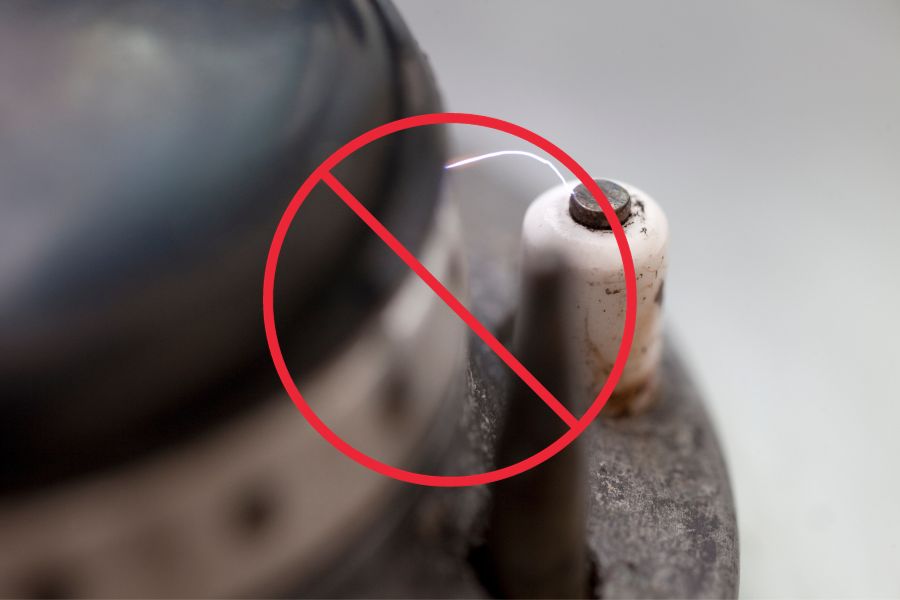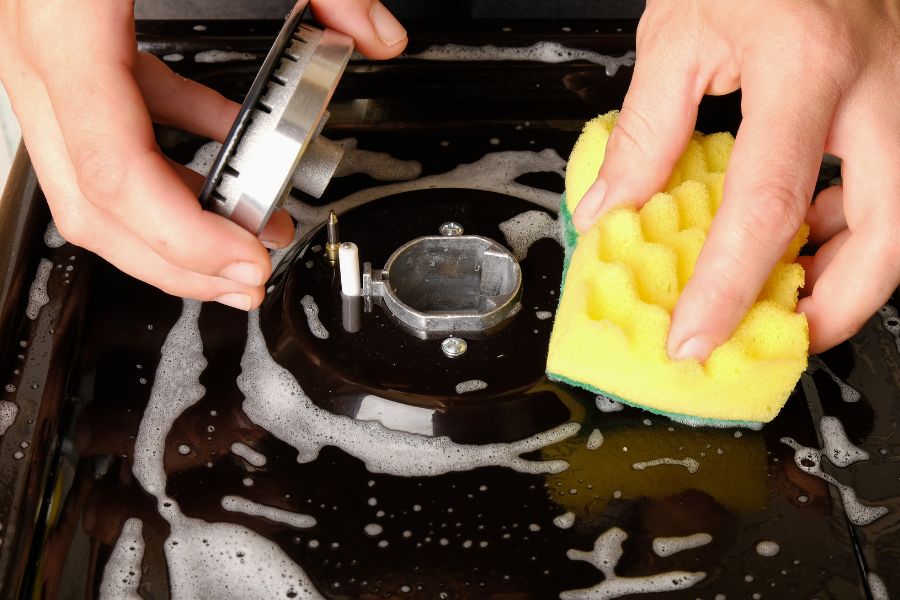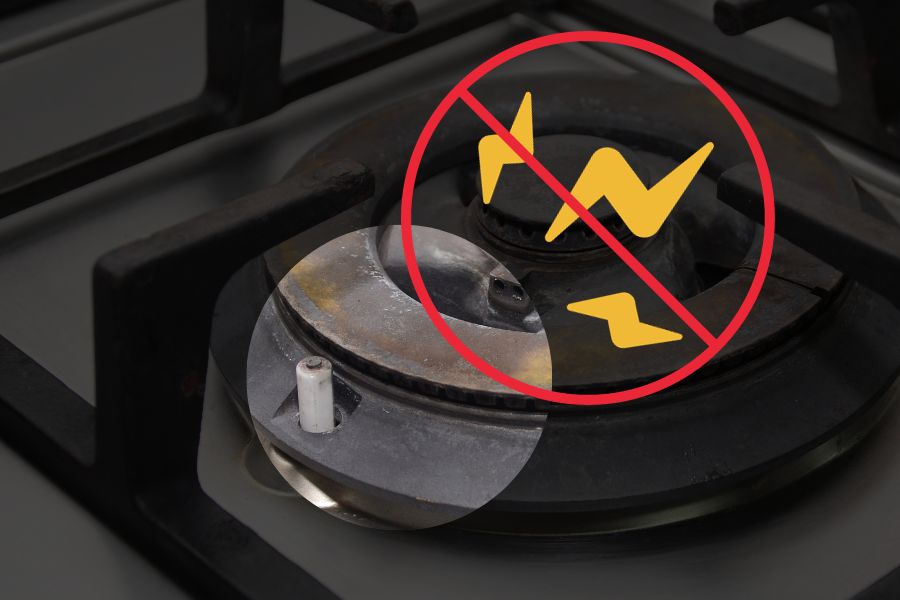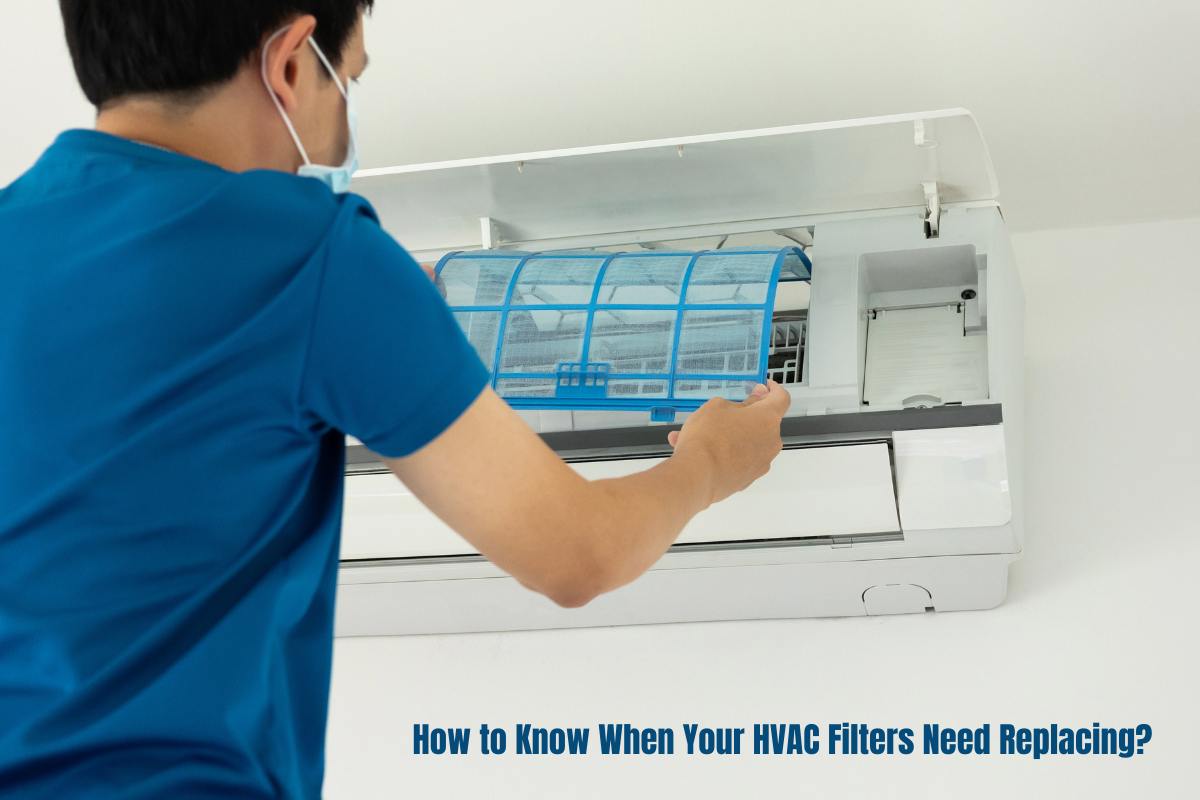Imagine diligently cleaning your gas stove to maintain efficiency, only to find the igniter not sparking afterward. It’s a situation I wouldn’t wish on my worst enemy. This leaves you with a burner that won’t light, rendering your stove useless when you’re gearing up to cook that special meal. Talk about bad timing!
But don’t fret. This article aims to explain why your stove igniter may not work properly after cleaning. We’ll provide you with a comprehensive guide on troubleshooting and fixing the problem. Whether you’re dealing with a single gas burner acting up or your entire gas range won’t light, we’ve got you covered.
So, before you shell out money for a new igniter or, worse yet, a new appliance, stick around. We’ll help you get your gas stove igniter sparking and back in working order, saving you time and money.
After cleaning your gas stove, there may be moisture in the burner head ignition port and flame ports. This can prevent the igniter from sparking. Allow the burner to dry completely before attempting to light it again.
How to Fix Gas Stove Igniter Not Clicking?
When you find yourself with a gas stove igniter that’s not clicking, resolving the issue promptly is crucial to get your stove back in working condition. Here’s a straightforward guide to help you diagnose and fix this common problem:
- Check for Power Supply: First, ensure the stove is properly plugged in and the circuit breaker hasn’t been tripped. No power to the range can result in the igniter not clicking.
- Clean the Igniter: Often, accumulated grime or food particles can block the igniter and prevent it from sparking. Use a cotton swab dipped in rubbing alcohol to clean the igniter gently. This should remove any residue interfering with its ability to spark or ignite.
- Examine the Igniter and its Components: After cleaning, check the igniter and its wiring to ensure they’re in good condition. Look for signs of damage or wear, such as frayed wires or corrosion, that could affect the igniter control module or switch.
- Replace the Igniter: If cleaning doesn’t resolve the issue, and you don’t see a spark when you turn the burner knob, the igniter may need to be replaced. Replacing a bad burner igniter is a relatively easy fix most homeowners can undertake.
Following these steps, you can effectively troubleshoot and fix a gas stove igniter that is not clicking. If you feel unsure about any of these procedures, it is always recommended to consult the manufacturer’s instructions or call a professional to avoid damaging your appliance.
Reasons Why Gas Stove Igniter Not Sparking After Cleaning?

The gas stove igniter may not spark after cleaning due to insufficient power supply, residue buildup, moisture damage, loose connections, or damaged parts. Knowing these reasons can help you troubleshoot and get your stove back in working condition.
- Power Supply Issues: Your igniter needs a stable power supply to generate a spark. If the connection is weak or the gas stove isn’t plugged in correctly, the igniter may fail to spark. It’s crucial to check the electrical connections and confirm that your appliance is properly plugged in.
- Residue Buildup: Despite your best efforts to clean the igniter, residue can still accumulate, preventing it from sparking. This buildup can range from leftover food particles to residues from cleaning agents. A thorough cleaning to remove such accumulations is essential.
- Moisture Damage: If your igniter gets damp during cleaning or the environment around the gas stove is humid, the moisture can prevent it from sparking. Ensuring the igniter is entirely dry before igniting the burner is key.
- Loose Connections: Connections between the igniter and the control module can loosen over time or when the stove is moved. This can inhibit power flow to the igniter, making it crucial to check these connections and tighten them if needed.
- Damaged Parts: Sometimes, parts of the igniter or the spark module may be damaged or worn out. This could result from general wear and tear or accidental damage while cleaning. You may need to replace the damaged parts to get your stove igniter working again.
Understanding these potential causes can help you troubleshoot and fix the issue effectively, ensuring your gas stove is back in its optimum working condition.
Troubleshooting a Gas Stove Igniter
When your gas stove igniter fails to spark after cleaning, it is important to troubleshoot the problem to determine the cause. Here are some step-by-step instructions for troubleshooting a gas stove igniter:
- Check the power supply: First, you should check that the gas stove is plugged in properly and that power is running to the appliance. Ensure that the circuit breaker is not tripped, and if it is, reset it. This step ensures that your gas stove is receiving the necessary electrical power.
- Clean the ignition system thoroughly: Residue can build up on the igniter or its surrounding components after cleaning. Therefore, cleaning the igniter, burners, and other related components is important to remove any possible debris or residue.
- Check the ignition components for wear and tear: Check the condition of the igniter and its components, such as the spark module, burner tubes, and burner caps. If they appear worn or damaged, then they need to be replaced.
- Use a multimeter to test the igniter: A multimeter can test the igniter’s electrical continuity and resistance. First, unplug the stove and remove the igniter. Then, set the multimeter to the continuity setting and touch one probe to the igniter’s metal base and the other to the metal tip of the igniter. If the multimeter shows continuity, the igniter is working correctly. If not, the igniter needs to be replaced.
Following these steps, you can troubleshoot your gas stove igniter and determine the issue. If the problem persists, it is recommended to call a professional to repair or replace the necessary components.
How to Fix Gas Stove Igniter That’s Not Sparking After Cleaning

If your gas stove igniter isn’t sparking even after you’ve tried troubleshooting, it’s time to roll up your sleeves and fix the problem. Let’s delve into the steps you can take to get your gas stove igniter working again:
- Turn Off Gas and Power: Safety first! Turn off the gas supply to your stove and unplug it from the electrical outlet to prevent any mishaps.
- Remove the Igniter: Carefully remove the igniter from the burner head with the gas and power off. Some igniters are secured with screws, while others have locking clips. Detach accordingly.
- Clean the Igniter: Use a soft cloth or brush to remove residual debris or residue. A water-vinegar mix can be useful for this task. Ensure the igniter is completely dry before reinstalling it.
- Inspect for Damage: Look closely at the igniter for any signs of wear and tear, like cracks or chipped areas. If you spot any, it’s time to replace the igniter.
- Test the Igniter: Reconnect the igniter to the control module and turn on the gas supply. If you don’t see a spark, this could point to a faulty spark module or burner igniter switch.
- Replace Damaged Parts: If your diagnostics reveal a faulty control module or a bad burner igniter switch, these will need replacing. Follow the manufacturer’s guidelines or seek professional assistance for this step.
- Reattach the Igniter: Reattach the igniter to the burner head once all the issues have been addressed. Test once more to confirm that it’s sparking as it should.
Following this systematic approach, you can successfully fix a gas stove igniter that’s not sparking after cleaning. Always remember to turn off the gas and power before starting any repairs, and if you’re unsure at any stage, don’t hesitate to call in a professional.
Tips to Prevent Damaging the Igniter During Cleaning
Maintaining a gas stove involves routine cleaning, but it is crucial to know how to prevent damage to the igniter and its components. Here are some guidelines to keep your gas stove igniter in optimal condition:
- Turn Off the Gas and Unplug the Stove: The first step is to cut off the gas supply and unplug the stove. This ensures you work in a safe environment, mitigating potential hazards.
- Use Approved Cleaning Products: Stick to manufacturer-recommended cleaning products to prevent the igniter from corroding or accumulating harmful residues. Avoid abrasive cleaners that may compromise the integrity of the igniter or related electrical components.
- Regular Cleaning Regimen: Consistent cleaning helps you to prevent the igniter from malfunctioning due to residue buildup. A weekly deep clean is generally sufficient for most gas stoves.
- Avoid Soaking the Igniter: Never immerse the igniter or any other electrical components in water or cleaning solution. Moisture can lead to electrical malfunctions and possibly affect the spark module.
- Employ Soft Cleaning Tools: Use a soft cloth or brush to gently clean the igniter and burner cap area. Steer clear of hard or sharp tools that may nick or damage the igniter.
- Allow Adequate Drying Time: Before reconnecting the power to the stove and turning on the gas valve, ensure all parts, especially the igniter, are thoroughly dry. Moisture can cause damage and impede the ability to produce a spark.
- Gentle Removal and Reattachment: When you remove the igniter for cleaning, handle the connections and igniter switch with care to avoid loosening or damaging any electrical connections.
By taking these precautions, you can extend the lifespan of your gas stove igniter and prevent issues that could block the gas flow or impair its ability to spark or ignite the burner. If you’re still experiencing a burner that won’t light despite following these tips, it may be time to look at more in-depth troubleshooting or consider if you need to replace the igniter completely.
Best Practices When Cleaning a Gas Stove

Beyond the essential steps for maintaining the igniter, there are additional best practices to adopt for the overall upkeep of your gas stove:
- Address Spills Promptly: Tackle any spills on your gas range burners or stove top immediately. This will prevent residue from hardening and ensure a cleaner burner head, facilitating better gas flow and efficient sparking.
- Temperature Moderation: Abide by the manufacturer’s instructions on cooking temperatures to avoid overheating the stove. Overheating could adversely affect the igniter control module and other critical components, leading to a burner that won’t light.
- Routine Stove Maintenance: To avoid issues like a gas stove that won’t light or gas stove igniter not sparking, keep the appliance clean by adhering to a regular cleaning schedule. This habit will make it easier to clean the igniter and prevent problems that may require you to replace the spark module or even the entire igniter.
By following these best practices along with the previously mentioned tips, you enhance not just the life of the igniter but the overall performance of your gas stove. Keeping the stove top and gas range burners clean helps maintain an effective gas and power supply to the appliance. If you encounter issues you’re not confident about fixing, don’t hesitate to consult the manufacturer’s guidelines or call in a professional.
Other Gas stove troubleshooting Guides:
- Why Is My Gas Stove Not Clicking?
- Why is My Gas Stove Making Noise When It’s Off?
- Why Gas Stove Won’t Light but Smell Gas?
Also, Check:
- How Much Does a Stove Weigh
- How Hot Does a Stove Top Get
- Do Electric Stoves Use Gas?
- Can I Use Induction Pan on Gas Stove
- Do Home Buyers Prefer Gas Or Electric Stoves?
- Do Gas Stoves Have Pilot Lights?
- What is Auto Ignition Gas Stove?
- Can You Put Gas Stove Grates in Dishwasher?
- How To Clean Electric Stove Coil Tops?
- Do Gas Stoves Need to Be Vented
- Are Natural Gas and Propane Interchangeable
- Griddle for Glass Top Stove
Conclusion: Fixing a Gas Stove Igniter That is Not Sparking
A gas stove igniter not sparking after cleaning can be a frustrating issue to deal with. However, it is important to troubleshoot and fix the problem properly to ensure your gas stove is safe and functioning correctly. Power supply issues, the buildup of residue, moisture damage, loose connections, and damaged parts are common reasons why gas stove igniters can fail after cleaning.
By following the troubleshooting steps outlined in this article, you can identify and fix the problem with your gas stove igniter. Additionally, taking precautions and following best practices when cleaning your gas stove igniter can prevent damage and keep it working effectively. As always, it is recommended to consult with the manufacturer’s instructions or a professional if you are unsure about cleaning or maintaining your gas stove.
References:






